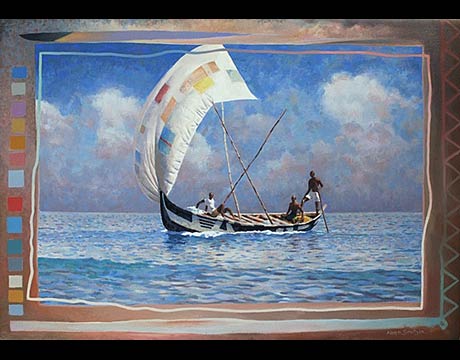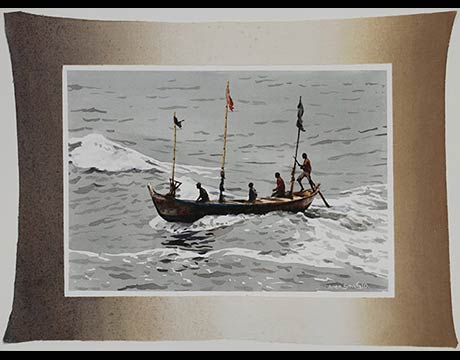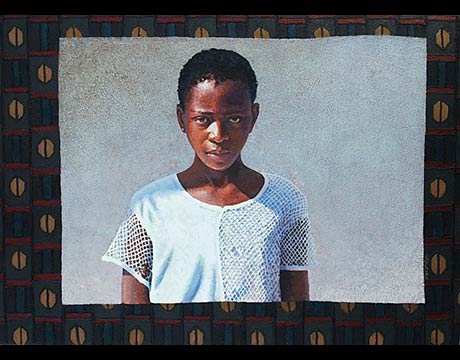Gallery - Recent Works - FISHING VILLAGES ON THE GOLD COAST
(Click image for slideshow)
Ghana is on what was referred to, and still is, as the Gold Coast of Africa. Because of this resource, Ghana garnered early European attention starting with the Portuguese in the 15th Century. Their exploitation was followed, each in their turn, by the Dutch, the Danes, the Swedes and the English, competing with each other for excess to the gold and for the other area resources, chiefly human beings. The slave trade soon replaced gold, becoming the area's chief resource. This developed into a trade network between three continents. Europeans taking finished goods to Africa in exchange for gold and slaves - gold and slaves shipped from Africa to the Americas in exchange for raw materials - raw materials shipped back to Europe for manufacturing into finished goods. Although different countries and territories were involved, this triangular trade route continued uninterrupted for three centuries.
My interest was focused on some of the small fishing villages along the south ocean coast of Ghana. There I continued to explore an ongoing interest, that of the relationship between man and water.
Going east to west, I stayed in the coastal fishing villages of Ada, Winneba, Salt Pond, Cape Coast and Elmina. (The coastal forts at Cape Coast and Elmina were two of the principal slave trade holding depots for all of West Africa.)
For ocean fishing, Ghanaians use large sock nets. The mesh is extremely small, so practically everything that comes into the net gets captured and pulled aboard. The boats (also called canoes) are double ended and hand made, hollowed out of huge tree trunks with an adze, leaving the hull about five inches thick. The sides are built up with nailed boards, that bend to join angled beams at the bow and stern of the boat, that act as prows. The gunnels are joined with a number of cross members that act as open decking. These canoes vary in length from 20 to 70 feet. Depending on the boat, they are powered by a combination of sails, oars and side mounted outboard motors.
Given their round hulls and no keel, the boats roll and tumble like tossed logs, in the huge swells of the ocean. In the largest canoes up to 40 men are aboard sometimes for days, in the blistering, relentless heat of the equator. Small boats have as few as two people aboard.
During most of the day in each of these villages, the beach frontage becomes a hive of activity with hundreds of canoes either being launched or hand hauled back on to shore above the high tide mark. Most of the time there are hundreds of women busily and loudly selling or buying fish, giant snails, sea tortoises and an assortment of other things from the sea. During this time the water's edge is a wild and raucous place, where children play while their mothers argue prices, men mend nets and repair boats, boys play soccer, and where men with dugout canoes look to the sea to survive.
:: BACK TO GALLERY






